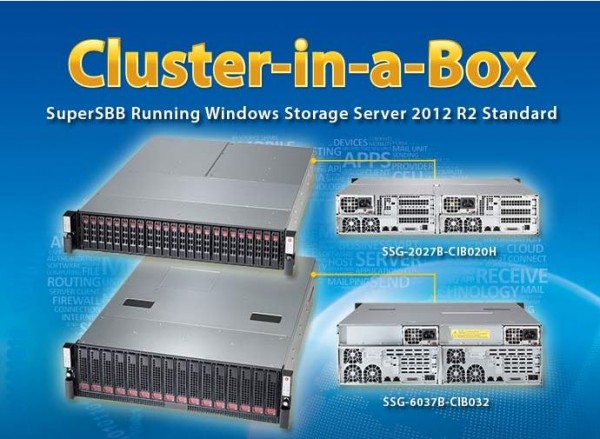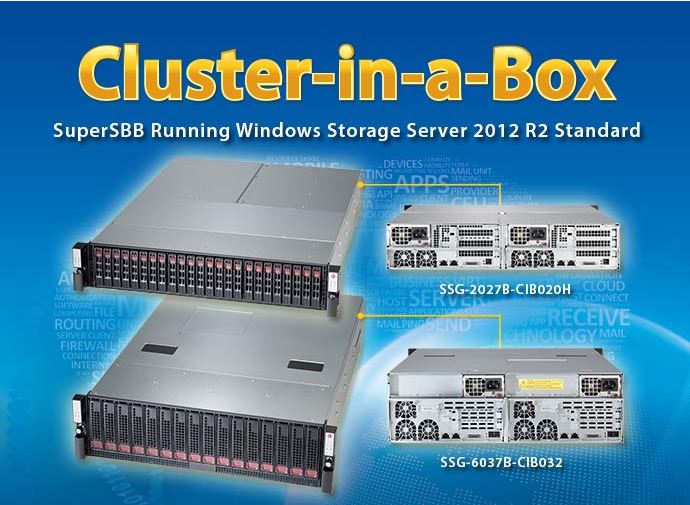At CeBIT this year Supermicro announced a Cluster-in-a-Box storage solution that places two storage controller nodes in a single chassis. This is conceptually similar to what we have done with the Mini Cluster In a Box v1 and v2 proof of concepts in recent times. The idea behind the Supermicro SuperSBB Cluster-in-a-Box storage solutions provide two nodes for redundancy in a single chassis (2U or 3U.)
For buyers of enterprise storage, having one controller is almost never enough. Most applications will have at least two controllers setup in either an Active-Active or Active-Passive configuration. Microsoft Windows Server clusters require at least two nodes for “clustered” shared storage. Even in scale out architectures where systems like Lustre, GlusterFS, Ceph and others require multiple storage nodes to stay redundant.
The Supermicro SuperSBB Cluster-in-a-Box (CiaB) solutions utilize dual LGA1356 Xeon processors in each node. The Intel Xeon E5-2403 is utilized since these are lower cost storage nodes. These nodes utilize SAS drives as those are required for Windows Server 2012 R2 clustered storage solutions. Each CiaB can also support JBOD expansion disk “shelves” to add even more capacity.

Suffice to say, with the current move of STH from a Linux (Proxmox) hypervisor and management solution to Hyper-V Server 2012 R2, this would have been an absolutely great solution to have installed in the colocation facility. Supermicro pre-installs and certifies Windows Storage Server 2012 R2 on the nodes making this very easy to setup out-of-the-box. For anyone who has configured clustered storage in Windows cluster environments can attest, having the right shared storage makes setup much easier.
By placing two nodes in a single chassis the overall space required is greatly reduced. Many storage-centric vendors such as EMC and NetApp utilize similar designs with two controller nodes in the same chassis with some storage capacity in the controller box. This type of architecture has been used for years in the NAS/ SAN market so it is great that lower cost solutions are coming out that utilize a similar architecture.




